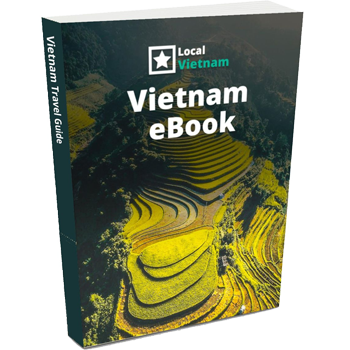What is Dong Khanh Tomb?
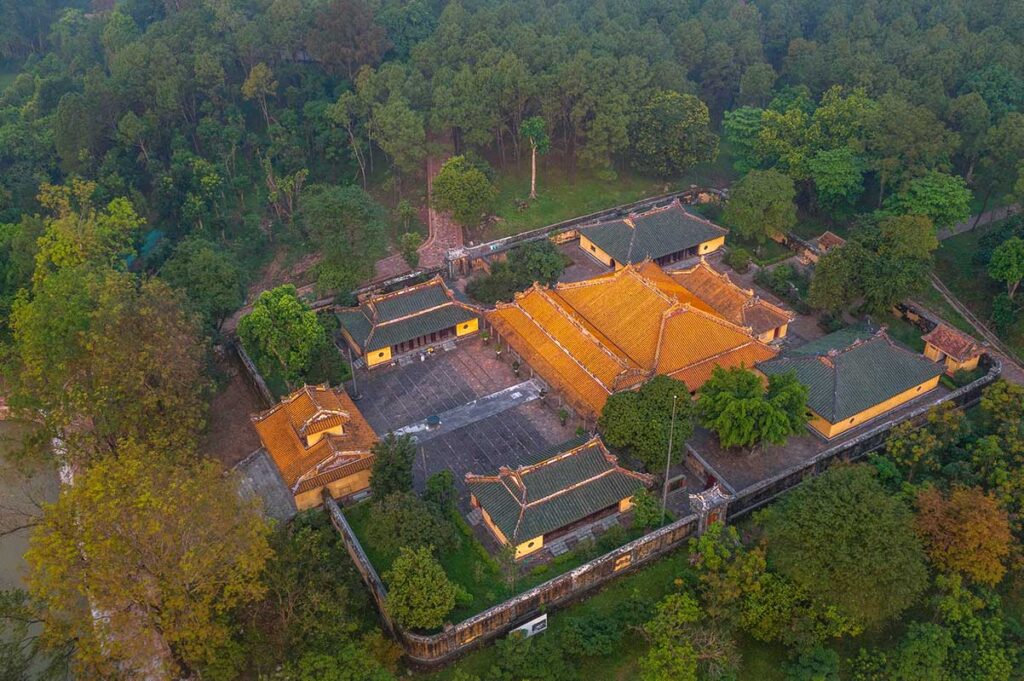
The Mausoleum of Emperor Dong Khanh is one of several royal tombs built during the Nguyen Dynasty near Hue, Vietnam’s former imperial capital. Located just a few kilometers from the more famous tombs of Tu Duc and Khai Dinh, this lesser-known site blends traditional Vietnamese architecture with early French-influenced elements. Like other imperial mausoleums in Hue, it was built to honor an emperor and serve as his eternal resting place — part of a long-standing royal tradition you’ll see throughout the region, alongside Hue’s Imperial City and ancient temples.
Who was emperor Dong Khanh?
Emperor Dong Khanh ruled from 1885 to 1889, during one of the most politically unstable periods of the Nguyen Dynasty. He was installed by the French colonial authorities after the fall of the short-lived Can Vuong resistance, making him a controversial figure in Vietnamese history. Known for his delicate health and close ties to the French, his reign was marked by increased foreign influence and internal divisions. Dong Khanh died young, at just 25 years old, and was succeeded by his cousin Thanh Thai — leaving behind a legacy shaped by political compromise and the growing shadow of colonial control.
History of Dong Khanh Tomb
The construction of the Dong Khanh Mausoleum began shortly after Emperor Dong Khanh’s death in 1889, but the project would take more than 30 years to complete — one of the longest construction timelines among the Nguyen royal tombs. Initially, only a modest temple (Ngung Hy Temple) was built in 1889 by his successor Thanh Thai to worship the late emperor. Financial limitations and political turbulence under colonial rule delayed further construction for decades.
It wasn’t until the reign of Emperor Khai Dinh — Dong Khanh’s son — that significant progress resumed. By this time, Western architectural styles had started influencing royal projects, and this is reflected in the later additions to the tomb. As a result, the Dong Khanh Mausoleum represents a transitional phase in Vietnamese imperial architecture, bridging the gap between traditional Nguyen design and the more European-influenced structures that followed.
The site was chosen in the same general area as other Nguyen tombs, near the wooded hills southeast of the Imperial City — both for symbolic harmony with nature and adherence to geomantic principles (feng shui). Despite its long timeline and multiple influences, the mausoleum remains a cohesive, if lesser-known, tribute to one of Vietnam’s short-reigned emperors.
Highlights & architecture
The Dong Khanh Mausoleum may not be as grand or famous as the tombs of Tu Duc or Khai Dinh, but its charm lies in the contrast between traditional Vietnamese elements and early signs of French colonial influence. The site is compact and easy to explore, with several notable structures that reveal the stylistic shift of the era. Here are the key highlights you’ll see when visiting:
1. Ngung Hy Temple – The original memorial shrine
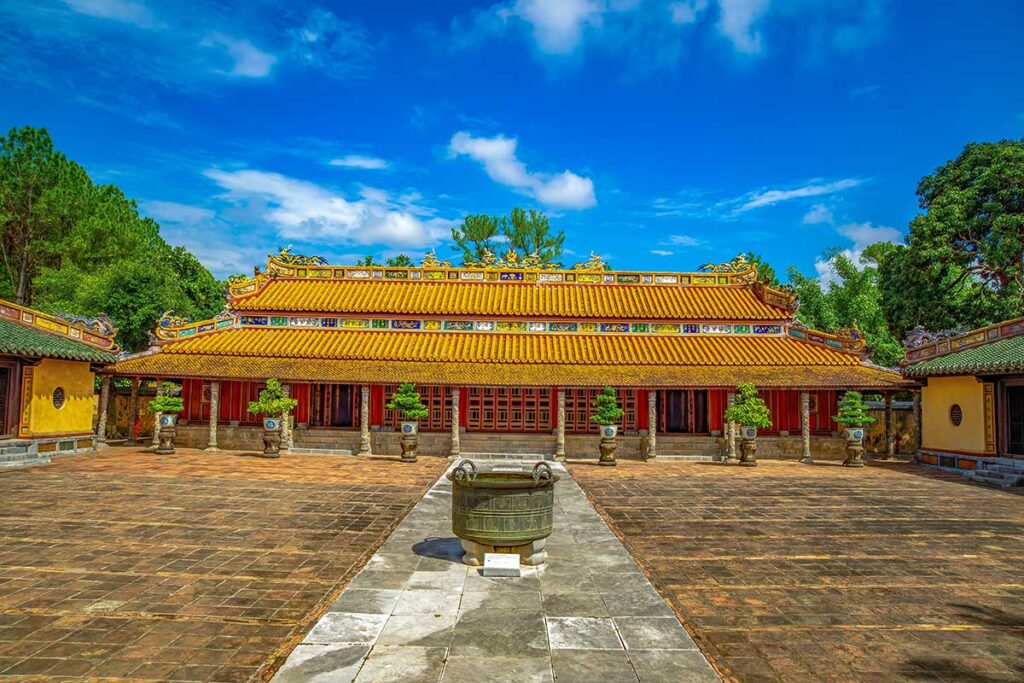
This temple was the first structure built at the site, originally serving as a place for worship rather than as part of a formal tomb. It has a traditional layout with a wooden frame, tiled roof, and decorative motifs common in Nguyen architecture.
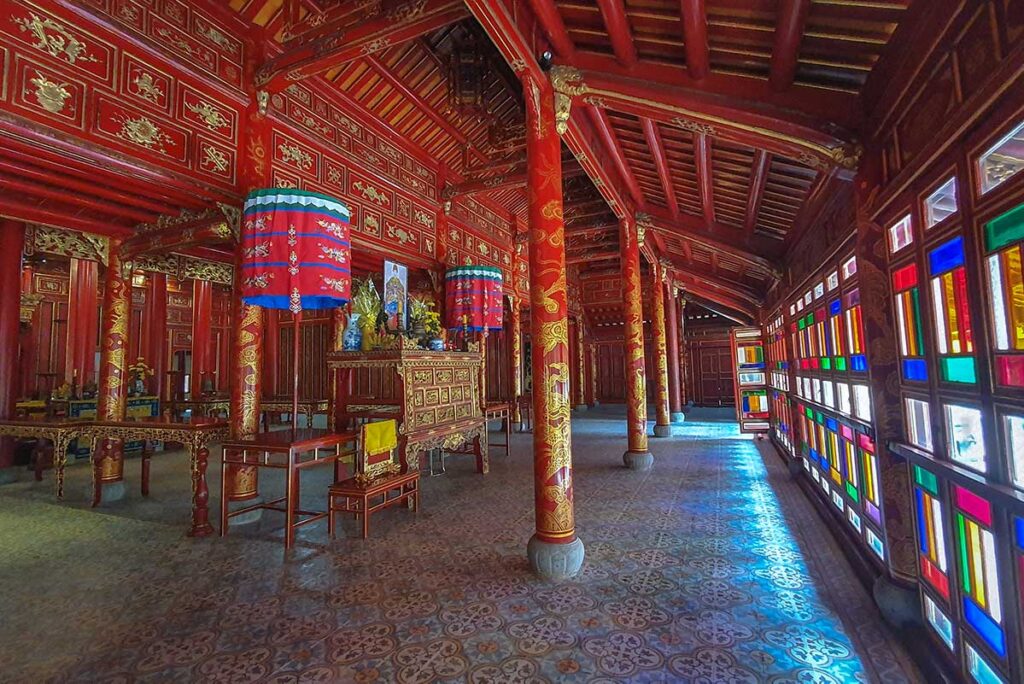
Inside, you’ll find altars dedicated to Emperor Dong Khanh and his ancestors, along with intricate woodwork and ceremonial artifacts. Despite later additions around it, this shrine maintains an intimate, spiritual atmosphere.
2. Stele House – A modest monument with a story
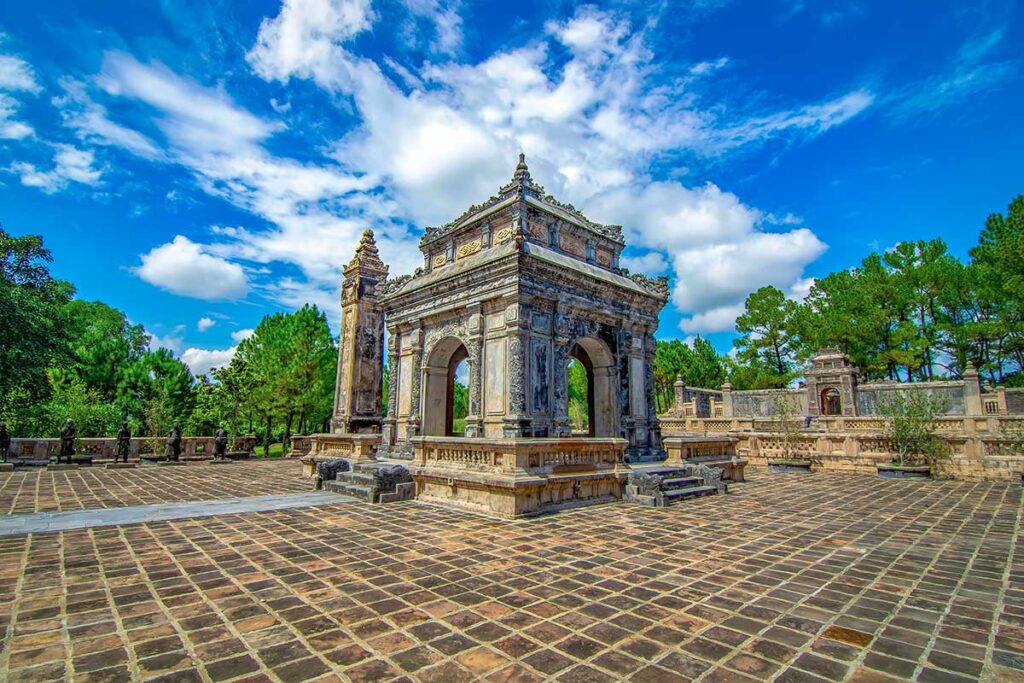
Like other royal tombs, the Dong Khanh Mausoleum features a stele pavilion where a large stone slab records the emperor’s achievements. The building itself is relatively simple, but the inscription offers insight into how the court wanted Dong Khanh to be remembered. It’s a reflective stop, giving context to the emperor’s short reign and the legacy he left behind.
3. The Honor Courtyard – Statues in stone

The honor courtyard is lined with stone statues of mandarins, elephants, and horses — a common feature in Nguyen tombs symbolizing imperial power and protection in the afterlife. Though smaller in scale than at Minh Mang or Khai Dinh’s tomb, the figures here are finely carved and well-preserved. Their presence adds a touch of solemnity and reinforces the site’s ceremonial role.
4. The Burial Area – Simplicity over monumentality
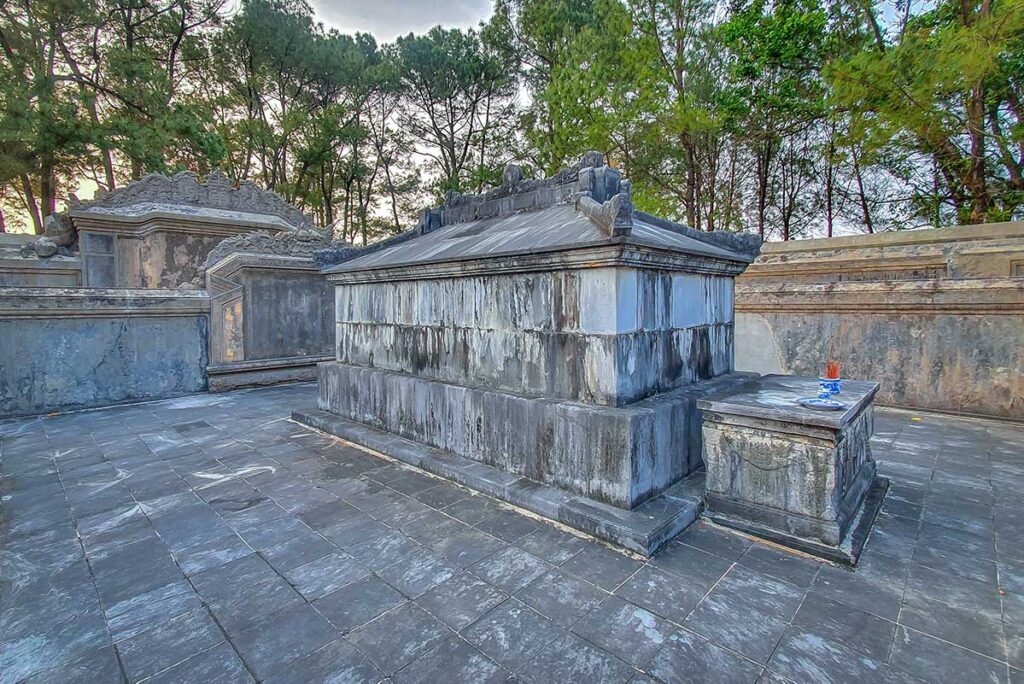
Unlike the highly decorated burial chambers of other emperors, Dong Khanh’s actual tomb is understated. The mound itself is modest, flanked by low walls and surrounded by trees. While it lacks the dramatic flair of Khai Dinh’s final resting place, its simplicity gives it a quiet, respectful feel — more about remembrance than display.
5. European influences – A Sign of Changing Times
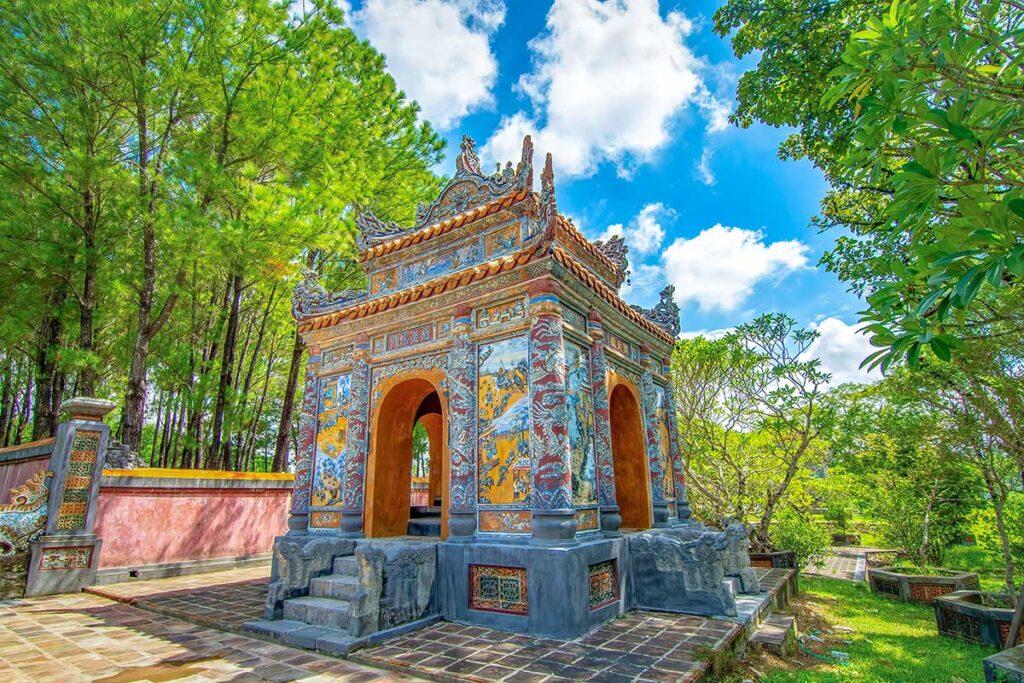
As you walk through the mausoleum, you’ll notice subtle details that reflect Western aesthetics: arched windows, floral ceramic patterns, and symmetry in design that goes beyond traditional feng shui principles. These elements mark the beginning of a stylistic transition that would culminate in later tombs. The blend of old and new makes Dong Khanh’s mausoleum architecturally unique among Hue’s royal sites.
Visiting information & Practical tips
Location
The Dong Khanh Mausoleum is located in Thuong Hai Village, just outside of Hue’s main city area. It sits about 6 km southwest of the city center, nestled in a peaceful, green setting. The location is close to several other major imperial and cultural sites, making it an easy addition to a day of sightseeing.
Entrance fee
There is no separate ticket to visit Dong Khanh Tomb — it’s included in the combo ticket for Hue’s main royal tombs, which also grants access to sites like Tu Duc and Khai Dinh. You can also purchase a single ticket if you only want to visit this tomb, but most travelers opt for the combo to save money.
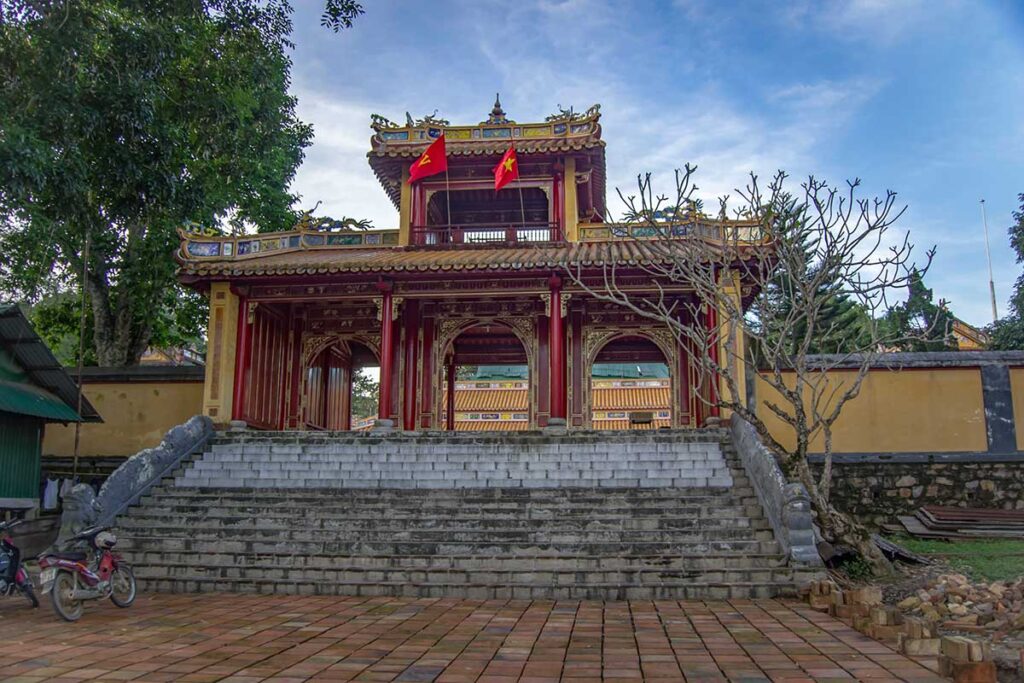
Opening times
The site is open daily from 7:00 AM to 5:30 PM. It’s best to visit in the morning or later afternoon when the weather is cooler and the light is better for photos.
Dress code
There is no official dress code, and enforcement is relaxed. Still, this is the burial place of an emperor, so it’s recommended to dress modestly — covered shoulders and knees are a simple way to show respect.
Guides
The tomb can be explored without a guide, and the area is small enough that it’s easy to navigate. However, there’s limited signage, and you won’t find much historical background on-site. If you want to understand more about Dong Khanh’s life, the symbolism of the architecture, and the context of the Nguyen Dynasty, a local guide can definitely enhance the visit.
Nearby sights
Dong Khanh Tomb is ideally located for combining with a few other top attractions in Hue:
- Mausoleum of Emperor Tu Duc (800 m) – One of the most poetic and expansive royal tombs in Hue, surrounded by pine trees and lakes.
- Thuy Xuan Incense-making Village (800 m) – A colorful and photogenic village where you can see how traditional incense is made.
- Mausoleum of Emperor Thieu Tri (2.3 km) – A quieter, lesser-visited royal tomb with a unique open layout and rural surroundings.
How to get there?
Taxi or grab app
The easiest way to reach the Dong Khanh Mausoleum is by taxi or using the Grab app (Vietnam’s version of Uber). A taxi from Hue city center to the tomb takes about 15–20 minutes and costs around 60,000–100,000 VND ($2.50–4 USD), depending on your starting point.
Grab is often cheaper and more convenient—you can book a car or motorbike through the app, and the price is shown upfront. The motorbike option is the most affordable and fastest for solo travelers.
Cycling or scooter
For a more scenic and flexible experience, you can rent a bicycle or scooter and explore the area on your own. Cycling is a great way to enjoy the rural surroundings, especially if you also plan to visit Tu Duc Tomb or Thuy Xuan Incense Village, both nearby. The road is relatively flat, and the distance from central Hue is manageable—about 6 km one way. Scooters are ideal if you want to cover more tombs and attractions in one day without time pressure.
Tour
Dong Khanh Tomb is not included in most standard group tours, which usually focus on the bigger names like Minh Mang and Khai Dinh. If you want to include it in your itinerary, the best option is to book a private tour, where you can fully customize which imperial sites and cultural spots you want to visit. This is ideal if you’re interested in seeing lesser-known locations at your own pace.
More historical sights in Hue
The Mausoleum of Emperor Dong Khanh is just one piece of Hue’s imperial legacy. The city was the capital of Vietnam under the Nguyen Dynasty, and today it’s home to some of the most important historical sites in the country — from royal palaces to sacred temples and impressive tombs:
- Hue Imperial City – The political and ceremonial center of the Nguyen Dynasty, with palaces, temples, and the emperor’s private quarters.
- Tu Duc Tomb – A tranquil and poetic retreat built by one of Hue’s most scholarly emperors.
- Minh Mang Tomb – Known for its symmetrical layout, serene lakes, and Confucian symbolism.
- Khai Dinh Tomb – A bold mix of Vietnamese and European design with intricate mosaic interiors.
- Thien Mu Pagoda – Hue’s most iconic pagoda, perched above the Perfume River and deeply tied to the city’s spiritual life.
For a full overview, see our guide: 10 Best Temples, Pagodas & Tombs in Hue

